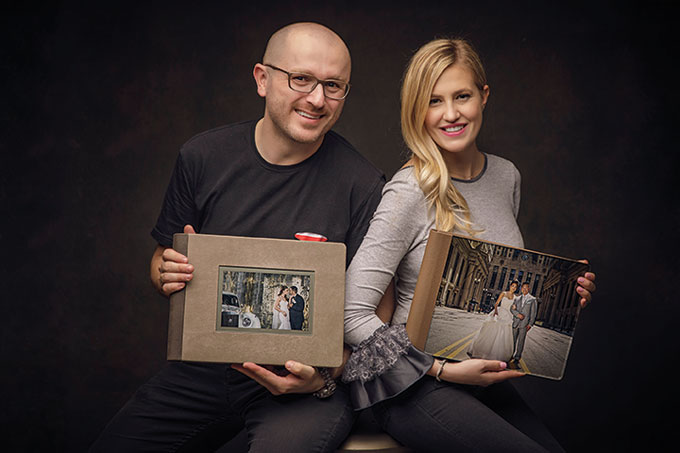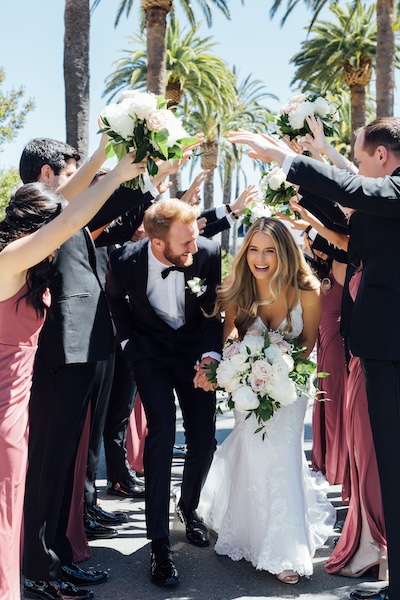Business + Marketing
As professional photographers, it is our job to capture the moments ours clients hire us for. It is also our job to create one-of-a-kind heirloom pieces for them through archival quality prints. These prints are meant to outlive your clients. If you are not offering them, then you are doing a big disservice both to your clients and yourself. In 2017, 35 percent of our WASIO Photography revenue came from print products. Here are ten proven ways we have generated more photography revenue through fine-art print sales.
1. Educate the client from the first meeting.
In this digital age, most people are not familiar with photographic prints. It’s important to educate your client from the first meeting on all the ingredients that make a print qualify as fine art. Discuss with your clients the standard of papers and inks that are used, including factors such as longevity and archival quality. This will help justify the price difference between a print made by a photographic lab from around the corner versus one from a high-end printmaker.
2. Provide additional value by including artistic signature edits.
Create a name for the images that go through additional editing that is specifically for prints. Again, engrave in your client’s mind that the final product is not an electronic file but rather a beautifully printed photograph. It’s important for the fine-art prints to be different from the proof photos that will be delivered to the client. We recommend only offering the additional editing for images that will go through the fine-art printing process.
3. Schedule an in-person viewing session to see the photographs together for the first time.
Viewing photos should be an experience of its own for your clients. Create the right atmosphere for them to feel comfortable in and let the emotions flow as they see their images for the very first time. After all, it is human nature to purchase products based on the kind of experience received. There is a big difference between viewing images for the first time on a cell phone versus a big screen television and sitting on a comfortable couch while sipping on your favorite drink.
4. Offer pre-packaged collections of sizes and special prices valid only during the viewing session.
When you send your client an email to schedule their viewing of the images for the first time, attach pre-packaged collections offered for prints. It is important to educate the client ahead of time on the sizes and print products you offer and that these prices will only be valid on the day of the viewing session. Of course, if they would like to purchase something after the viewing session, it will be available for purchase at full price.
5. Invest in samples to show options.
It’s hard to imagine what a certain paper will look like, especially if you are not so familiar with paper products. Have all the samples on hand and ready to show your client when they come over. It’s a completely different experience when you can touch and feel the product versus just seeing a picture of it on the screen. Touching different paper products is an experience of its own and it helps build a new appreciation for
fine-art prints.
6. KIS(S). Keep it simple (stupid)!
Do not overwhelm your clients by offering every single possible size that exists on this planet. By simplifying the sizes and options, it will make the process of selecting prints much more pleasurable and easy for the client. Try to keep the sizing options between three to four maximum. Select sizes that are easy to frame either online or a local framing store. (Our sizes are 11 x 16, 16 x 24, 20 x 30—the most popular option—and 30 x 40 inches).
7. Photograph for various sizes of fine-art prints.
It is so important to give your clients options in the sizes of fine-art prints through the photos you present. Some photos may look better in a panoramic size while others fit the classic 30 x 20 size, which is actually one of the most comfortable sizes for the human eye. It’s not a coincidence that one of the most famous paintings history, Mona Lisa by Leonardo da Vinci, is 30 x 21 inches.
8. Weigh the benefits of making your own fine-art prints versus printing with labs.
When you create your own prints in-house, you have the flexibility to experiment with different papers and mats. We use the Canon PRO-1000 printer, and because we are Moab Masters, we use primarily Moab papers. You can also create custom profiles specific to your printer and paper to produce optimal colors. Once you become proficient printing your own work, it’s a little bit more cost efficient than going through the lab. Canon printers allow tracking the cost of the ink and paper to calculate the exact cost of each print. Sharing with your clients that you make prints in-house it is an extra touch to show how passionate and dedicated you are when it comes to printed photography. Another benefit of making prints in-house is the ability to quickly make some gift prints for your clients when they come for the in-person viewing session.
That said, making your own prints means investing more up front as you purchase the printer, papers, ink and countless test prints before learning to master printmaking and develop a workflow that works the best for your studio. If you decide to print through a lab, make sure to obtain all of the sample papers you are interested in so you know how the photo will look on the specific paper before placing an order. Make sure that your lab offers ICC profiles for each printed product so you can soft-proof your prints before submitting them for printing. Printing through a lab will save you a lot of time and money in the short term that is typically required to master printing in house. Using a lab would also be recommended for studios with lower printing volume.
9. Use software to virtually display the fine-art prints for your client.
There are programs like Fundy Designer that allow us to virtually design print displays on our clients’ walls. This approach helps greatly with fine-art print sales. Before we invite our clients to the studio, we ask them to send us pictures of walls in their home they were thinking of using for prints. That way when we schedule the in-person viewing session, we are prepared to guide them with what prints and sizes will look best on their walls. This approach also helps our clients visualize the prints on their walls and be more confident with their decisions.
10. Accept credit cards.
If you are not accepting credit cards, you need to start doing so right away. There are so many companies these days that make it extremely easy to do so. It’s important to have the flexibility to accept this form of payment so you never have to say no to a client if this is their preferred method of payment.
At the end of the day, when you deliver a print product to your client rather than just digital images, you know you’ve done your job to keep photography alive and going. Making the time to educate your clients on prints and having dynamic and experiential in-person sales will create an unforgettable experience while generating increased sales per client. The power of print should not be underestimated!
Yaneck and Sasha, based out of San Diego, are the founders of WASIO Photography and WASIO Faces. Their work has been featured in Canon and Moab Paper booths, and they’ve won numerous WPPI awards and recognitions. In 2017, Sasha won the Most Talented Photographer of the Year from Magic Lens Awards. Yaneck has a popular YouTube channel at bit.do/youtubewasio and Instagram, @wasio. Recently, they welcomed baby Savannah to their nest. Yaneck and Sasha are proud members of the Moab Paper Masters, Phottix Pro Team and Savage ambassadors.
Related: How To Create An Award-Winning Photo Print
WPPI Prizewinners Discuss Their Print Choices








